This is one of the first blogs I ever wrote, and evidently I was hell-bent on imparting every thought I ever had on the subject, and all related subjects, in one fell swoop. Sorry 🙂
Cookies are my nemesis – fat and sugar in perfect balance. I like all kinds – the soft ones, the crispy ones, the plain ones, the ones with everything in them but the kitchen sink. The big problem, of course, is that cookie recipes make batches of several dozen, all of which I can eat in a single sitting. There are two approaches I could take to modify my behavior: freeze the cookie dough, baking only the appropriate number of cookies at a time, or develop a small batch recipe. Do you know how delicious frozen cookie dough is? Why do you think they have an ice-cream flavor that features it?
The problem with a small batch is the egg. Cookie dough requires an egg to hold the other stuff together. A small batch of cookie dough (except for shortbread) would need about half an egg. If you use a whole egg, the dough will be too wet. I thought about using the no-yolk liquid egg product, but my experience with it when developing the Single Serving Yorkshire Pudding recipe left me disinclined (although it would probably work just fine). The use of just the egg yolk, or just the egg white, is a solution I have read about. Yolk alone is very rich, and white alone is flavorless and messes with the texture. Taking a DIY approach, I lightly beat three eggs and froze my own liquid egg product in 1 tablespoon increments in an ice cube tray. I like the trays that come with a cover – I was already using one for leftover tablespoons of tomato paste and bits of grated ginger and minced garlic. Flavors transfer, so don’t put the egg cubes in with the garlic cubes.


A large egg, on average, measures 3 tablespoons plus 2 teaspoons, not quite a quarter of a cup, so I figured 2 Tablespoons is about the equivalent of half an egg. I’m pretty sure someone else has come to the same conclusion – you could Google it. You can use a fresh egg for your baking, of course, saving the unused half to add to your next omelette (or, if you are uber-organized, you could whip up eggs for an omelette for breakfast, and hold back 2 tablespoons for cookies for afternoon tea). I think having a couple of frozen egg cubes on hand might turn out to be useful from time to time.
I used my frozen egg cubes for one of the trial batches, but it was spur of the moment, so I hadn’t let them thaw in the fridge (as would be required in the interest of food safety). I dropped them into the melted butter and sugar mixture AFTER I had cooled it down a bit, so the eggs would melt but not scramble. I let a minute go by, and then I broke up the partially-thawed egg cubes with my spoon and stirred until they were fully melted. Worked for me!
Here is a recipe for very basic cookie dough, with substitution suggestions and addition suggestions that will jump-start your imagination, and allow you to make just enough cookies to take you slightly into trouble. Or you could share. Or you could freeze the dough in balls and bake them up one at a time (if you don’t eat the frozen dough first).
A Small Batch of Cookies
Ingredients: Remember that baking is science. Measurement matters. If you don’t have a ¼ cup measure, the
equivalent is 4 level tablespoons.
¼ cup butter (or margarine) melted, not still sizzling
¼ cup white sugar
¼ cup brown sugar
2 Tbsp beaten egg
3/4 cup flour
¼ tsp baking soda
Pinch of salt (sea salt is good, Kosher or table salt is ok)
Flavoring: ½ tsp vanilla – or options suggested below
Texture/Flavor Ingredients: Up to 1 cup total anycombination of tasty things – see below

Skor Bar and Pecans

Half a cup was enough
Flavoring Agents: Flavoring agents may include any kind of extract that appeals to you – vanilla is not the only option. Start with small quantities – you can add more, but you can’t take it back out. You could add any spice that smells good – cinnamon, ginger, cardamom – but go easy on clove or nutmeg (same rule about starting with small quantities, same reason). You could add finely grated citrus zest (although grapefruit can be quite bitter), probably up to a packed teaspoon or so. Remember that vanilla makes things taste even sweeter than they were without it – if you’re planning to add sweet Texture/Flavor ingredients, balance them out with spice or citrus zest or an extra pinch of salt, and leave the vanilla out.
Texture/Flavor Ingredients: For fun and creative “Texture/Flavor” ingredients,you could add just about anything, as long as it’s not wet (like canned pineapple or frozen blueberries). Choose from the following, or make up your own: chocolate chips or other flavored chips, chopped nuts (toasted for best flavor), oatmeal (large flakes or not, toasted or not, but absolutely NOT instant), coconut (also possibly toasted), any dried fruit (chopped or otherwise), and/or coarsely crushed cereal (bran flakes are surprisingly good). There are little gumdrops especially formulated for baking, but jelly beans are a bust, especially black ones. I haven’t tried gummy bears or licorice. Smarties, M&Ms, Reeses Pieces, etc., etc., etc. – all good. Chopped up Skor bar is really good, or a combination of Skor bits and mini chocolate chips if you have them. I think hard candy (crushed or chopped) would probably melt out, but don’t let that stop you from trying (I know I have seen crushed candy canes on Christmas cookies somewhere). Nerds? (I mean the candy…) Pop rocks?
You could make up a batch of dough, divide it in half or quarters, and make small trial batches of combinations if you’re in the mood to really push the boundaries of creativity. You might want to check out that combination of cinnamon red-hots and chili powder before committing a whole batch to the flavor combination. Mini chocolate chips, oatmeal, coconut and pecans is a no-brainer (1/4 cup of each, maybe…). Check your kitchen cupboards and fridge. How about orange zest, coconut and chopped dried apricots, with cinnamon and ginger or cardamom? Dried cranberries, walnuts, and a bit of allspice would be nice (equally nice added to breakfast oatmeal). Nothing in the house? Chop up some of those chocolate covered almonds that kid forced you to buy, or coarsely crush some Fruit Loops. You could probably even put some whole Cheerios in the batter – why not!
METHOD:
Preheat oven to 350°F. Toaster oven is perfect. Have a non-stick cookie sheet ready, or cut a piece of parchment paper or non-stick foil to fit your baking sheet of choice. Parchment paper is really worth the investment: all cookie-sheet-greases are messy, build up, and eventually make you not want to use that cookie sheet any more.
Mix melted butter, sugars, egg and vanilla (or other flavoring) with a spoon until thick and lightened in color (about 1 minute of pretty vigorous stirring).

Add baking soda and salt, stirring to distribute evenly.

Add flour. Stir until no flour is visible. If your cookie dough seems very dry at this point, you could add up to a teaspoon of water, and work the dough with your hands to achieve a soft, playdough-like consistency. If it seems very runny and sticky, add a little more flour, but not too much, as the dough will tighten up as it rests and chills. As with all my small baking recipes, a little error in measurement can result in a significant change to the final outcome, so be careful.

Stir in whatever Texture/Flavor ingredients you have chosen.

Chill dough for 10 – 15 minutes to firm up (while you wash dishes and clean the counter). Scoop, spoon, or roll into balls. Flatten if required. Dough balls can be frozen at this point (place on plastic wrap, freeze until hard, then transfer to an airtight container or zip-closure bag for storage).

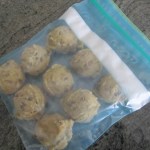
Cookie Size: I have a nifty 2-tablespoon-sized scoop that I use for “perfect” cookies. You can make your cookies any size you want to. Small fairly plain cookies will flatten themselves while baking. Great big cookies may need to be flattened slightly before they go in the oven in order for the middle to be cooked before the edge is “European brown” (read “almost burned” – it’s a cultural thing). Cookies that are loaded with extras may also need flattening. Little cookies will cook faster than big cookies (duh). You can cook frozen cookie balls without thawing first, but I would remind you about flattening the biggies.
Space cookies at least an inch apart on the baking sheet to accommodate spreading.

Bake in the pre-heated oven until cookies are puffed and edges are browned, about 10 minutes for a 2 Tbsp cookie, if you want a chewy centre. Longer cooking will result in crisper cookies, so if you want them chewy, don’t overbake.


Cool on a rack before eating, or you’ll burn your mouth.

Everything you ever wanted to know about Butter: Don’t use spreadable margarine for baking – it has too much water in it. Regular butter has 14 – 18% water in it; spreadable margarine contains up to 40% water. Butter tastes better. Unless you’re doing your Christmas baking, buy salted butter; it keeps longer, is a great multi-tasker, and in my part of the world, it isn’t very salty. Store extra butter in the freezer – it will keep up to 9 months if you wrap it tightly in plastic right over the foil. Butter will pick up other flavors in the fridge, so wrap it well. If it smells like bad machine oil or fish that’s gone off, it’s rancid – throw it out.
Here’s the deal with butter measurement: One 454gm block of butter is a pound (16 ounces). One pound of butter is 2 cups of butter. Use geometry to measure your butter: Half a pound is a cup; half of that is half a cup; cut that piece in half to get a quarter of a cup; and cut that quarter cup piece into 4 pieces to get tablespoons. If you buy your butter or margarine in sticks, ¼ cup is half a stick. Until we all start baking using solids measured by weight, and liquids measured by millilitres, butter will continue to be sold in 454gm/one pound blocks.

Canada is a no-man’s land, caught between metric measurement (millilitres and grams) and Imperial measurement (cups and ounces). I bet you know your weight in pounds, but NOT in kilograms … and think in inches rather than centimeters. Most Canadian recipes are written using cup measurements, as we have done since we stopped using “butter the size of an egg”, although occasionally you will find metric measurements, as we are supposed to be a metric country. Recipes from the United States are written using cups and ounces. Australian recipes are written in cups and grams.
Baking Soda — Multi-tasker: You will have noticed that there is baking soda in this recipe, not baking powder. The soda gives a bit of lift, but not too much. I like baking soda because it’s a nice multi-tasker. You can buy a box (which isn’t expensive, really), store about a third in a sealed container to use for baking, put some in an open container in the fridge to keep it smelling fresh (change it once a month), and add some to the laundry if you want, or the bath, to soften the water. Even if you store baking soda in a cool, dark and dry place, it won’t last forever — if you’ve had it for a year, it’s getting old. It’s a good idea to test your baking soda “of an unknown age” by mixing some with some water and a bit of vinegar – if it bubbles, it’s still good.
Brown Sugar Substitution: Golden brown sugar is just white sugar with molasses added to it. If you don’t have brown sugar, you can add 2 teaspoons of molasses and use all white sugar (but be precise, because you’ll be messing with the wetness of the dough). You’re more likely to have brown sugar around than molasses, though, aren’t you? Dark brown sugar (Demerara) is fine, golden brown sugar is fine, but the product called “Sugar in the Raw”, which has large crystals, will mess with the texture. If you want to use honey or agave syrup, do some research and develop your own recipe.
Chocolate Cookies: If it’s chocolate cookies you’re craving, you have some options. You could substitute 1/4 cup of unsweetened cocoa powder (not hot chocolate mix or chocolate milk drink mix) for 1/4 of the flour, or you could add 3 tablespoons of unsweetened cocoa powder and one extra tablespoon of butter, or you could melt an ounce (or a scant 30 grams) of bitter-sweet chocolate with the butter. Baking (and eating) chocolate contains quite a bit of fat, which will alter the composition of the dough when you’re working with such a small quantity, so for each ounce of chocolate you use, reduce the amount of butter by 1 tablespoon. You will note by my failure cookies, the simple addition of melted chocolate doesn’t work very well at all.

Gluten Free Options: I made a batch of this dough with coconut flour and orange zest. It was tasty and held together well (always a concern when gluten is absent), but the dough did not spread as it baked, resulting in pudgy little cookies — tasty and cute, but not what I expected. Since I first wrote this article, I have worked with a much wider variety of gluten-free flour blends, and I know they would all work pretty well, with the addition of 1 teaspoon of xanthan gum per cup of flour used, so about a generous 1/2 (or a real 3/4) teaspoon for this particular recipe. Based on my coconut flour experience, I think I would recommend flattening the dough balls before baking.




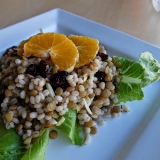
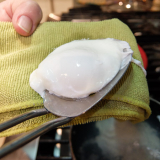
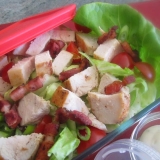
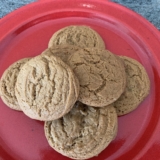
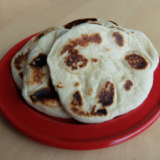
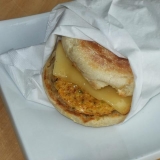
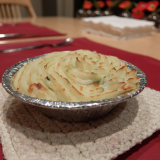
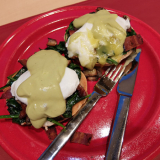
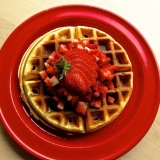
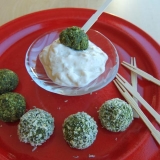
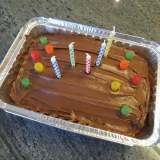
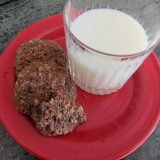
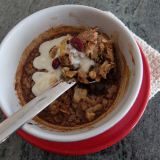
Leave A Comment